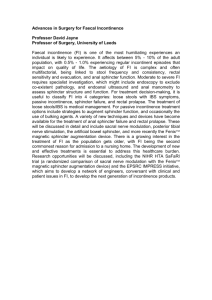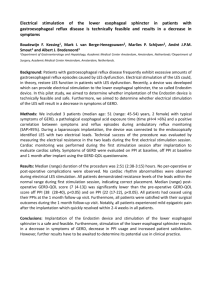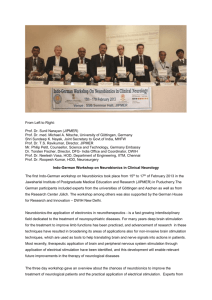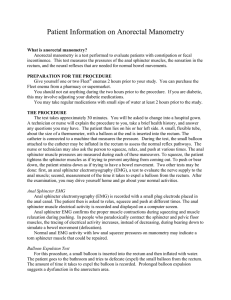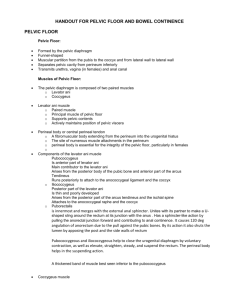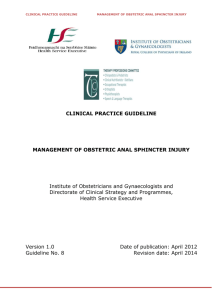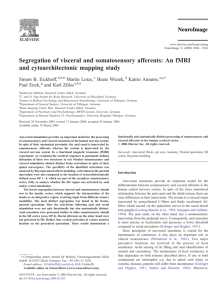606 neurotransmitters regulating tone of the internal anal sphincter
advertisement
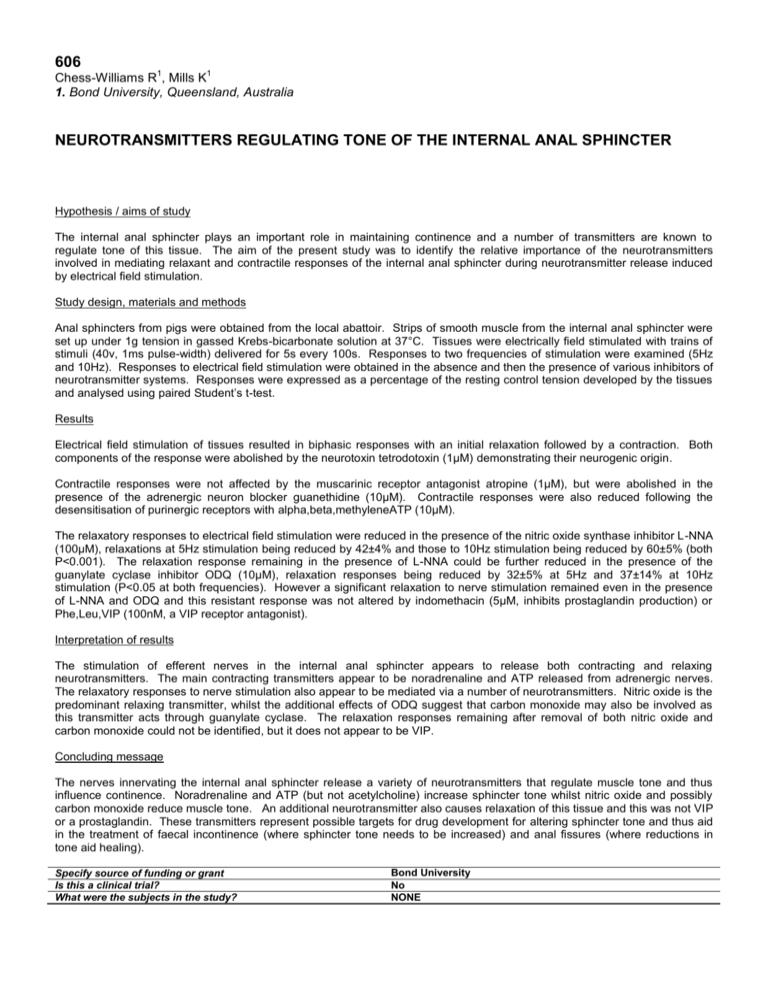
606 1 1 Chess-Williams R , Mills K 1. Bond University, Queensland, Australia NEUROTRANSMITTERS REGULATING TONE OF THE INTERNAL ANAL SPHINCTER Hypothesis / aims of study The internal anal sphincter plays an important role in maintaining continence and a number of transmitters are known to regulate tone of this tissue. The aim of the present study was to identify the relative importance of the neurotransmitters involved in mediating relaxant and contractile responses of the internal anal sphincter during neurotransmitter release induced by electrical field stimulation. Study design, materials and methods Anal sphincters from pigs were obtained from the local abattoir. Strips of smooth muscle from the internal anal sphincter were set up under 1g tension in gassed Krebs-bicarbonate solution at 37°C. Tissues were electrically field stimulated with trains of stimuli (40v, 1ms pulse-width) delivered for 5s every 100s. Responses to two frequencies of stimulation were examined (5Hz and 10Hz). Responses to electrical field stimulation were obtained in the absence and then the presence of various inhibitors of neurotransmitter systems. Responses were expressed as a percentage of the resting control tension developed by the tissues and analysed using paired Student’s t-test. Results Electrical field stimulation of tissues resulted in biphasic responses with an initial relaxation followed by a contraction. Both components of the response were abolished by the neurotoxin tetrodotoxin (1µM) demonstrating their neurogenic origin. Contractile responses were not affected by the muscarinic receptor antagonist atropine (1µM), but were abolished in the presence of the adrenergic neuron blocker guanethidine (10µM). Contractile responses were also reduced following the desensitisation of purinergic receptors with alpha,beta,methyleneATP (10µM). The relaxatory responses to electrical field stimulation were reduced in the presence of the nitric oxide synthase inhibitor L-NNA (100µM), relaxations at 5Hz stimulation being reduced by 42±4% and those to 10Hz stimulation being reduced by 60±5% (both P<0.001). The relaxation response remaining in the presence of L-NNA could be further reduced in the presence of the guanylate cyclase inhibitor ODQ (10µM), relaxation responses being reduced by 32±5% at 5Hz and 37±14% at 10Hz stimulation (P<0.05 at both frequencies). However a significant relaxation to nerve stimulation remained even in the presence of L-NNA and ODQ and this resistant response was not altered by indomethacin (5µM, inhibits prostaglandin production) or Phe,Leu,VIP (100nM, a VIP receptor antagonist). Interpretation of results The stimulation of efferent nerves in the internal anal sphincter appears to release both contracting and relaxing neurotransmitters. The main contracting transmitters appear to be noradrenaline and ATP released from adrenergic nerves. The relaxatory responses to nerve stimulation also appear to be mediated via a number of neurotransmitters. Nitric oxide is the predominant relaxing transmitter, whilst the additional effects of ODQ suggest that carbon monoxide may also be involved as this transmitter acts through guanylate cyclase. The relaxation responses remaining after removal of both nitric oxide and carbon monoxide could not be identified, but it does not appear to be VIP. Concluding message The nerves innervating the internal anal sphincter release a variety of neurotransmitters that regulate muscle tone and thus influence continence. Noradrenaline and ATP (but not acetylcholine) increase sphincter tone whilst nitric oxide and possibly carbon monoxide reduce muscle tone. An additional neurotransmitter also causes relaxation of this tissue and this was not VIP or a prostaglandin. These transmitters represent possible targets for drug development for altering sphincter tone and thus aid in the treatment of faecal incontinence (where sphincter tone needs to be increased) and anal fissures (where reductions in tone aid healing). Specify source of funding or grant Is this a clinical trial? What were the subjects in the study? Bond University No NONE
